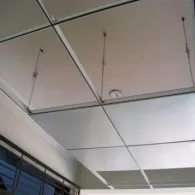- Afrikaans
- Albanian
- Amharic
- Arabic
- Armenian
- Azerbaijani
- Basque
- Belarusian
- Bengali
- Bosnian
- Bulgarian
- Catalan
- Cebuano
- Corsican
- Croatian
- Czech
- Danish
- Dutch
- English
- Esperanto
- Estonian
- French
- German
- Greek
- Hindi
- Indonesian
- irish
- Italian
- Japanese
- Korean
- Lao
- Malay
- Myanmar
- Norwegian
- Norwegian
- Polish
- Portuguese
- Romanian
- Russian
- Serbian
- Spanish
- Swedish
- Thai
- Turkish
- Ukrainian
- Uzbek
- Vietnamese
Νοέ . 29, 2024 21:23 Back to list
Durable PVC Laminated Ceiling Panels for Modern Interiors and Aesthetic Appeal
The Benefits and Features of PVC Laminated Ceiling Panels
In modern interior design, the choice of materials plays a crucial role in defining the aesthetics, functionality, and longevity of any space. One such material that has gained popularity in recent years is the PVC (Polyvinyl Chloride) laminated ceiling panel. These panels are being embraced by homeowners and commercial spaces alike for their remarkable properties and benefits.
What are PVC Laminated Ceiling Panels?
PVC laminated ceiling panels are lightweight panels made from a core of PVC that is coated with a decorative layer. This layer can feature a wide variety of colors, patterns, and finishes, allowing for a high degree of customization. The panels are designed for easy installation and can be used in various applications, including homes, offices, and retail spaces.
Durability and Maintenance
One of the standout features of PVC laminated ceiling panels is their exceptional durability. They are resistant to moisture, making them an ideal choice for bathrooms, kitchens, and other high-humidity areas. Unlike traditional ceiling materials like wood or plaster, PVC panels do not warp, crack, or peel over time. This durability translates to a longer lifespan, reducing the need for frequent replacements and repairs.
Maintenance is also a significant advantage. Cleaning PVC laminated ceiling panels is straightforward; a simple wipe with a damp cloth is usually sufficient to remove dust and stains. They do not require painting or sealing, which saves both time and money in the long run. This makes them particularly appealing to busy households or commercial spaces that cannot afford prolonged downtime for maintenance.
Aesthetic Appeal
Aesthetically, PVC laminated ceiling panels are available in an impressive range of designs. From sleek, modern looks to more traditional styles, there is something to suit every taste and décor. The glossy finish of the panels can enhance the light in a room, creating an illusion of more space and a brighter atmosphere. Additionally, these panels can be printed with custom designs, allowing for an added personal touch in private residences or branding opportunities in commercial settings.
pvc laminated ceiling panel

Cost-Effectiveness
PVC laminated ceiling panels are often more cost-effective than traditional ceiling materials. The initial investment can be lower, and due to their durability and low maintenance needs, they can provide significant savings over time. Furthermore, the lightweight nature of PVC makes installation easier and faster, further reducing labor costs. With the convenience and affordability of PVC panels, more people are exploring this option as an alternative to conventional ceiling materials.
Environmentally Friendly Options
An increasing number of manufacturers are focusing on producing environmentally friendly PVC products. Many panels are now being made from recycled materials and are free from harmful substances, making them a safer choice for indoor air quality. Some brands adhere to sustainability practices, ensuring that their production processes minimize environmental impact.
Versatile Applications
The versatility of PVC laminated ceiling panels extends to a variety of applications. They can be used in residential living spaces, offices, schools, hospitals, and even commercial establishments such as restaurants and shopping malls. Their ability to withstand moisture and mildew makes them ideal for areas prone to humidity, while their aesthetic flexibility allows them to contribute positively to any design scheme.
Conclusion
In summary, PVC laminated ceiling panels present a myriad of advantages that make them an attractive option for both residential and commercial settings. Their durability, low maintenance needs, aesthetic flexibility, cost-effectiveness, and environmental considerations position them as a suitable choice for anyone looking to enhance their space. As the trend towards modernity and functionality continues to grow in the realm of interior design, PVC laminated ceiling panels are likely to remain a key feature in both contemporary and traditional architecture. Whether you are renovating an existing space or designing a new one, these panels offer a compelling solution to elevate the overall design and functionality of any room.
-
Transform Interiors with PVC Gypsum Ceiling: A Stylish, Durable, and Moisture-Resistant SolutionNewsMay.19,2025
-
The Smart Interior Upgrade: Discover the Durability and Versatility of Gypsum Ceiling Access Panel SolutionsNewsMay.19,2025
-
The Smart Choice for Interior Design: Discover the Value of PVC Gypsum Ceiling SolutionsNewsMay.19,2025
-
Mineral Fiber Ceiling Tiles: The Smart Blend of Performance and AestheticsNewsMay.19,2025
-
Mineral Fiber Ceiling Tiles: The Superior Choice Over Gypsum for Sound and Fire SafetyNewsMay.19,2025
-
Mineral Fiber Ceiling Tiles: Eco-Friendly Strength and Style for Every CeilingNewsMay.19,2025







